A not-inaccurate way to describe Digital Eclipse compilations is that
they are the Criterion Collection’s game counterparts. Using their Eclipse game
engine, they’re able to take the ROMs of older games and decompile them for
modern systems at maximum efficiency, and using painstaking effort and
resources from whoever hires them, they get every detail they can about the
games included. That includes development history, interviews, high
quality scans of whatever production and promotional artwork they can get their
hands on, music galleries and explanations of each game’s central idea and what
unique parts they play in the history of its franchise and gaming. It can
almost make the games more of a side attraction there to let you experience the
history the rest of the package lays out.
I recommend their Street Fighter 30th Anniversary Collection, even if Street Fighter is obviously for peasants who can’t play
KOF. It not only has all the mainline
games made before Street Fighter 4 (as well as the original Street Fighter nobody cares about),
but it also has online play for the four most important games included and the aforementioned museum.
 |
| That's a lot of games. |
After how well they pulled that off, I got excited for their
new fighting game anniversary collection on the PC: the Samurai Shodown Neogeo
Collection. It may not be as awesome as the fast-paced action of KOF, but
Samurai Shodown has its own legacy as a series less focused on high speed
combos and more focused on slower-paced fencing, where one strike from a weapon can do tons of damage and draws lots of blood to really make you feel the weight of the blades. With a beautiful aesthetic of the Edo
period of Japan , it’s host
to all kinds of warriors of old from around the world, from Prussia
to France to Texas
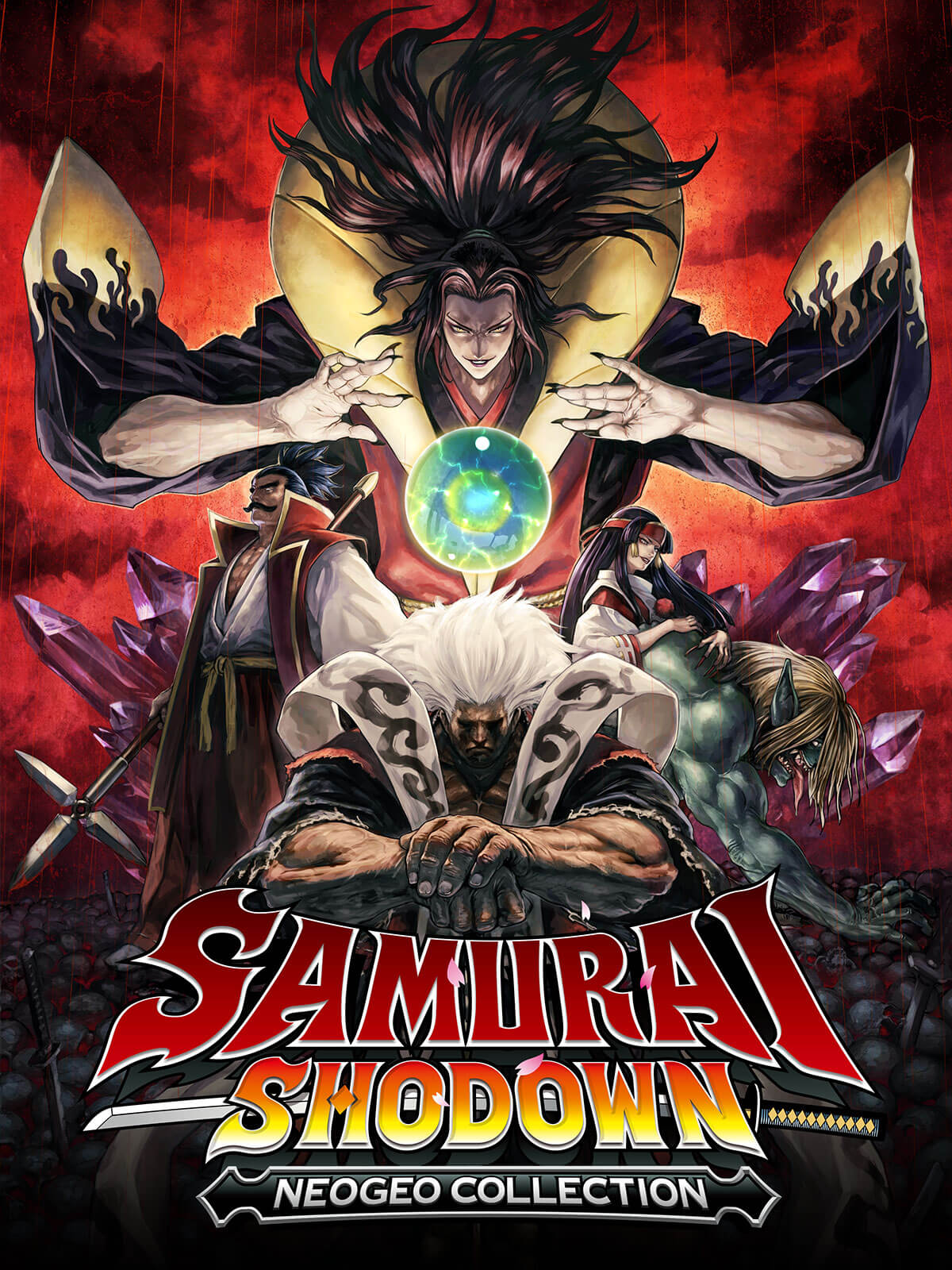 |
| This is one of the best pieces of cover art ever. Gold star. |
Since it’s only Neogeo games, that unfortunately means it
excludes Samurai Shodown 6 because it was on the Atomiswave arcade system,
which is a shame because many regard 6 as one of the best. For 6 you’ll have to get the Anthology
collection, which includes the full PS2 version complete with every single
Samurai Shodown character in the main series up to that point.
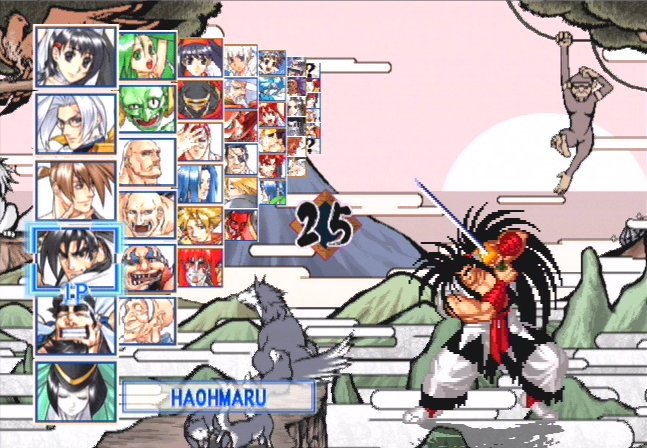 |
| Whoah. |
The big show stealer of the Neogeo Collection is the museum. There are a few hours worth of interviews
with the developers of all five games (mostly the first three), a big series timeline
and a gallery for everything Samurai Shodown.
That includes art from the other games (plus crossovers) and lots and
lots and lots of production art like storyboards, move layouts, unused
character designs, sketches, and promotional posters. I think there’s more design documents in this
collection than in Street Fighter’s, and that’s saying something. The only thing missing compared to that
collection is descriptors on the history timeline.
The Street Fighter collection had brief explanations in text for each
game on its timeline not included in the collection so that the unfamiliar
would know what they were looking at. This one just throws the art at you.
A unique inclusion is recordings of tournament championship
matches for each game in the collection (except 5 Perfect, obviously). As a video of the match plays, an accompanying
text box gives a very detailed play-by-play about the match and aspects of the
game that come into play, providing some much-welcome insight into playing them.
Keeping in mind that some art books with similar content can
cost $30-$40, this $40 compilation has enough to justify about half the asking
price from the time and effort put into the museum alone. I already get a lot of enjoyment out of the art galleries in home ports of other SNK games and this is those beefed up to the Nth degree.
As for the games themselves, they are direct, faithful
emulations of the original arcade versions, as has been the case with Digital
Eclipse’s collections thus far. For a
brief rundown of their individual quality:
Samurai Shodown 1: Garbage. The computer cheats like crazy,
the music isn’t very fun to listen to and the developers outright state in the
interviews more than once that the characters were unbalanced and they were
surprised people liked it as much as they did.
I was too. I only recommend playing
it for a few minutes so you can better appreciate how much better every other Samurai Shodown game is.
2: Considered one of the best and I can see why. The
computer plays relatively fair, the graphics were re-done, the music doesn’t
sound quite as limited by the hardware, there are story cutscenes to add
gravitas and characters seem more balanced.
It’s surprising to me how well it holds up.
3: Graphics and sound improved, but with only one story bit
per character at the very end, a rather awkwardly implemented dodge mechanic
and computer opponents that have the superhuman ability to perfectly counter
you the exact microsecond you attempt something before the animation plays out,
it isn’t quite as good as the game before or after it. It’s not bad so much as unpolished.
4: Another series high point. It has a story leading into Samurai Shodown
2, a solid cast of characters, smoother, faster gameplay with a combo system
that doesn’t take away from the hard-hitting traditional combat and just
the right amount of violence to be gratifying.
5: I’ll get to that.
5 Special: A great game as far as character selection and
gameplay goes. The addition of overkill
moves spices the spectacle up considerably and the special dodging button adds
maneuverability for an even more kinetic duel.
That just leaves the legend, Samurai Shodown 5 Perfect. For years many debated whether the game
existed, but it is now playable in all its glory, complete with a new story
translated into English directly into the code by the tech wizards at Digital
Eclipse.
Don’t get too hyped though.
Samurai Shodown 5 Perfect was never intended to be anything more than a
slightly altered version of 5 Special.
The most important addition is a little story, but it’s barely there. A few brief scenes follow the black-garbed
referee Kuroko trying to deliver a letter to the player’s selected fighter,
which is revealed to be an invitation to the non-canon battle event in Samurai
Shodown 6. At the end of the arcade
mode, text on a static screen of the character exposits their reaction to
it. A brief hint from Kuroko on how to
fight the bosses past Amakusa at the end is appreciated for whoever didn’t
know, but anyone expecting a bigger story will be disappointed since it’s a
tease for another game. For my money
it’s better than nothing and technically a step above 5 Special not having any
story to speak of.
In its gameplay there’s next to no difference except that unlike the 5 Special port on Steam, the violence is locked to medium in both versions of Special in the collection, meaning some of the more brutal overkill moves like
Rasetsumaru’s are altered, but at least there’s still plenty of blood present,
as opposed to the laughable censorship in some places that made the blood white.
It’s not replacing the Code Mystics port of Samurai Shodown
5 Special as far as multiplayer goes, but I appreciate
Digital Eclipse went out of their way to put the English text into the code for
a proper translation of this over decade-old game. It’s great that this
piece of gaming history, however small it may be, is now preserved and
available. I only wish that translation
job could’ve been done to the original Samurai Shodown 5.
The original Samurai Shodown 5 should be my favorite in the
franchise overall. It has fast-paced combat, exciting music and, the
most compelling reason to play compared to the other games, a great story to go
with it that takes place before any other game in the series. Every character has their own prologue, conversations
with the villains and endings that further explain their backstories for the
other games, all with that snazzy map transition the first game had.
In Japanese.
In what is probably the worst thing SNK has ever done that
hasn’t been wiped from my memory, the English version of Samurai Shodown 5
completely exorcized any and all story and style that made it stand out. In the English version, you fight enemy after
enemy with no interludes, fight the final boss and immediately watch the credits
once he’s down. It feels like a bootleg
or beta version. After all the detail
and character-building of the games before it, the English version of Samurai
Shodown 5 will always be a big slap in the face for me and the one in this
collection is no different. It does have the option of switching to the Japanese version of each
game, where all the story’s intact, but even if you do know some Japanese you
also have to be fast enough to read all the dialogue because it
auto-advances. You can never claim that
a translation job is the laziest you’ve ever seen unless you’ve played Samurai
Shodown 5! You don’t get much lazier
than no translation job at all!
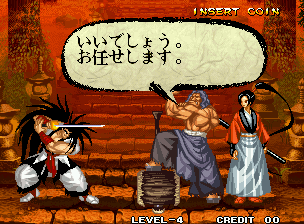 |
| この言語はわからない。 |
What bothers me even more
is that among all the information in the museum, nothing acknowledges this. There is no mention
about how all the story was taken out.
The historical background information for the game explains a story that
isn’t there! If not a proper translation I was at least hoping for an explanation!
Instead we’re left with a soulless husk of a game thrown in to
inevitably confuse and disappoint the unaware.
On the technical side of things, it's not that well-optimized and every game in this
collection has an odd quirk regarding the screen resolution. You can’t change the game’s resolution in
full screen mode for some reason and anything above the second-lowest
resolution setting in windowed mode makes them horribly stutter for me on my computer that can run the Code Mystics port of 5 Special with no problem. Once it’s closer to their native resolution, they
run with next to no problems, but then I find it difficult to tell any
difference the Eclipse engine makes compared to ports like those of the
Anthology collection. There’s an option
that keeps character sprites from being downgraded when the camera pans in and
out (due to memory restraints of the time), which is a great touch other
emulations can’t boast, but it affected performance so much I couldn’t use
it.
[Update: Since writing this review I got my hands on a better computer and tried the HD pixel scaling. It makes certain parts of the games, such as the zoomed-out sprites for 2's boss introduction, look sharper and the games look more consistently clean overall with it on.]
There’s enough value in these games to be worth the other
half of that $40 asking price, but being arcade-perfect ports, they don’t
exactly come with all the bells and whistles.
Unlike the Samurai Shodown Anthology, there’s no training mode, the
adjustable round count is missing from Samurai Shodown 4 and the arranged music
from the Neogeo CD versions of the games aren’t present (though the Neogeo tracks
can sound so much like real instruments that it’s almost a non-issue for me). With fully customizable controls for every used button combination (very helpful since the button functions hop around between games), they're fun and functional ports, just not quite standout ones.
The game features this collection has over the Anthology
collection are two things: saving and online play. Being able to save and load mid-game is a
godsend for playing through arcade mode.
They can get long and some people need a break. They also can get hard and some people need
to save after they win a round to save themselves time and frustration when
they lose afterwards. I don’t judge. That alone makes the versions in the Neogeo collection a better choice to play through in my eyes.
The other selling point, the online play, as you may have
read elsewhere, is not very well thought-out.
The Street Fighter collection had a great idea where it focused its
multiplayer on the best iterations of each Street Fighter era and Street
Fighter 2. There’s a neat system in it
where the two players fighting first choose which game they want to play and
it’s selected from their choices at random.
That was not implemented in this collection. There is no lobby system and every game and
their separate Japanese version are all divided into their own subdivision of
player searching, which scatters the online players into 14 different
sub-sections with no way of knowing if anyone is online to play them. It’s great that you can play every single
game online instead of a select few and it’s not a big deal if you’re arranging
to play online with friends anyway, but it’s a wasted opportunity that makes it
difficult to find players.
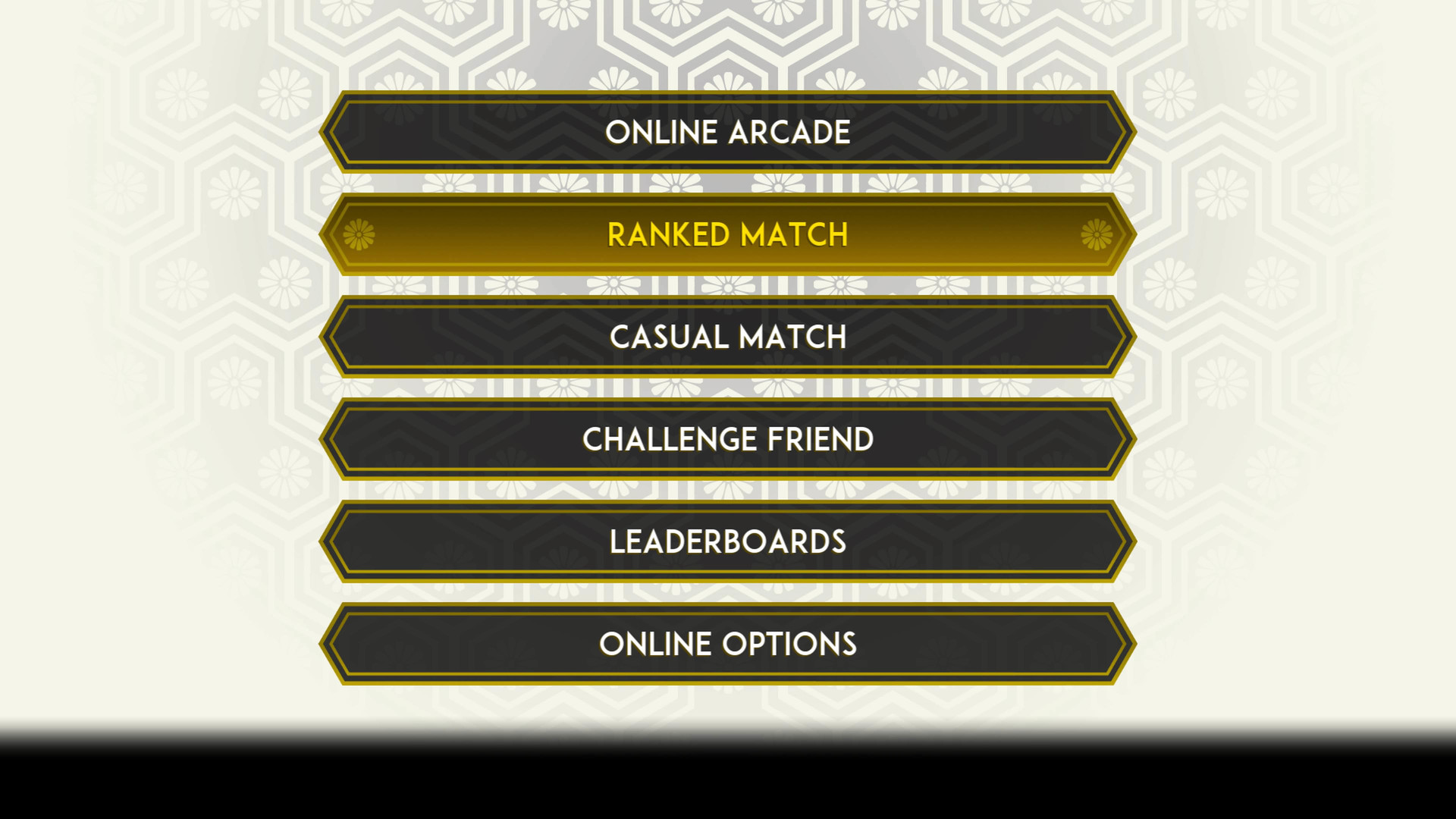 |
| Were lobbies too much to ask for? |
In my experience, the online play itself is a weird
conundrum in that it’s both really bad, but still works at the same time. It’s bad because the game often stutters, resulting
in it skipping frames and messing up the audio.
It still works at the same time because the controls are responsive even when the stuttering is at its worst. It never feels like there’s input lag and I can have fun with the gameplay still functioning, but the consistent
stuttering makes it far from ideal. Competitive
players that wanted the optimal way to play these games online are going to be
disappointed unless you’re planning to play with friends within the same
region.
Even if the online isn’t anything to write home about, new
players that want to try Samurai Shodown for themselves offline will find the Samurai
Shodown Neogeo Collection is a good starting point and the museum is great no
matter how familiar the player is. With
that said, longtime fans may already have most of the games in it elsewhere and if the online play isn’t optimal, there’s not a lot to make these
ports stand out. The save feature is
nice, but the Eclipse engine and HD sprite scaling don’t make enough of a
noticeable difference to set it apart from the versions you can get on the PS3
or the excellent port of Samurai Shodown 5 Special on the Vita and PC. What you see is what you get: the old Neogeo
classics, which I can recommend well enough. I give the Samurai Shodown Neogeo Collection
a 7 out of 10.

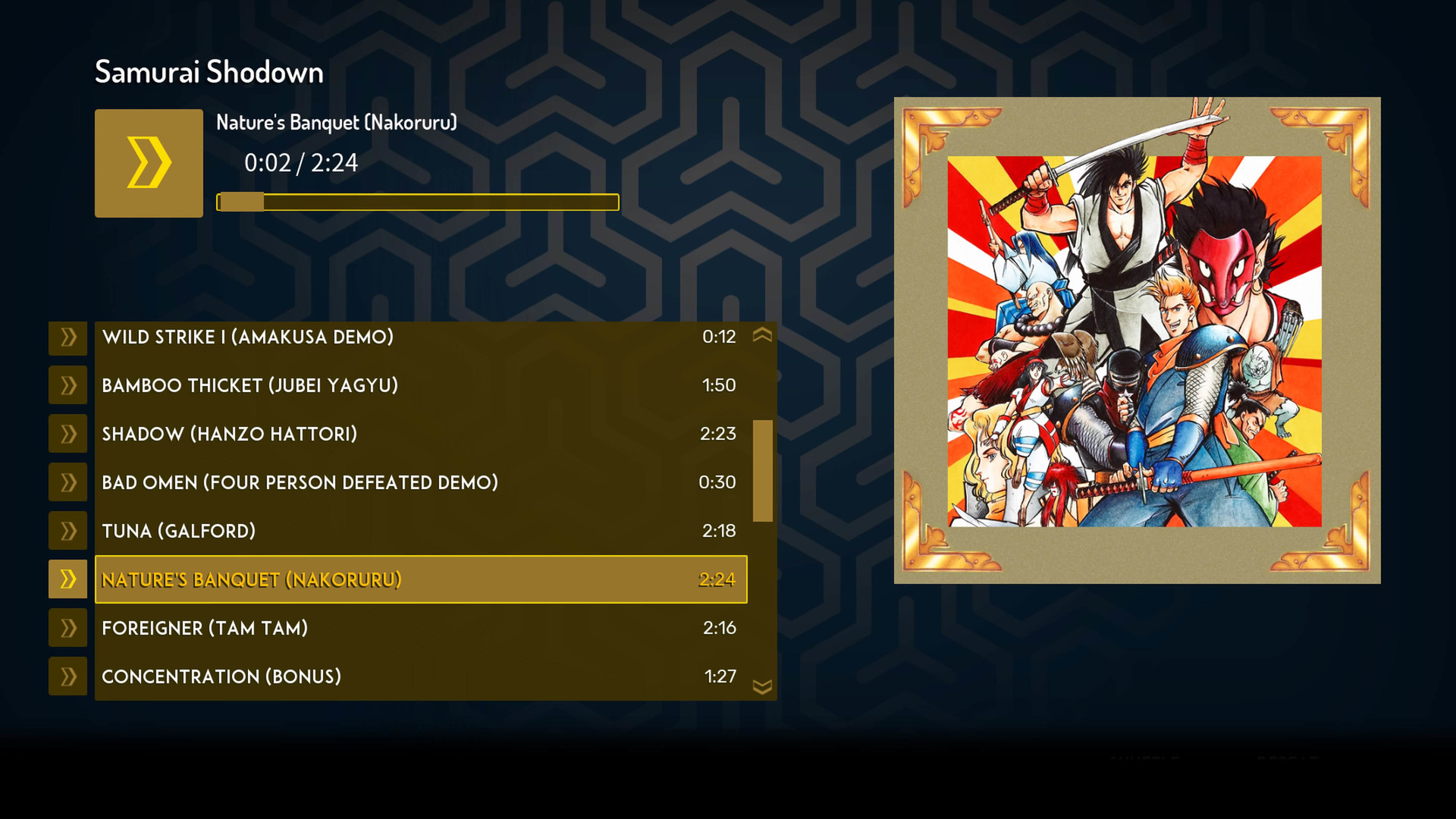
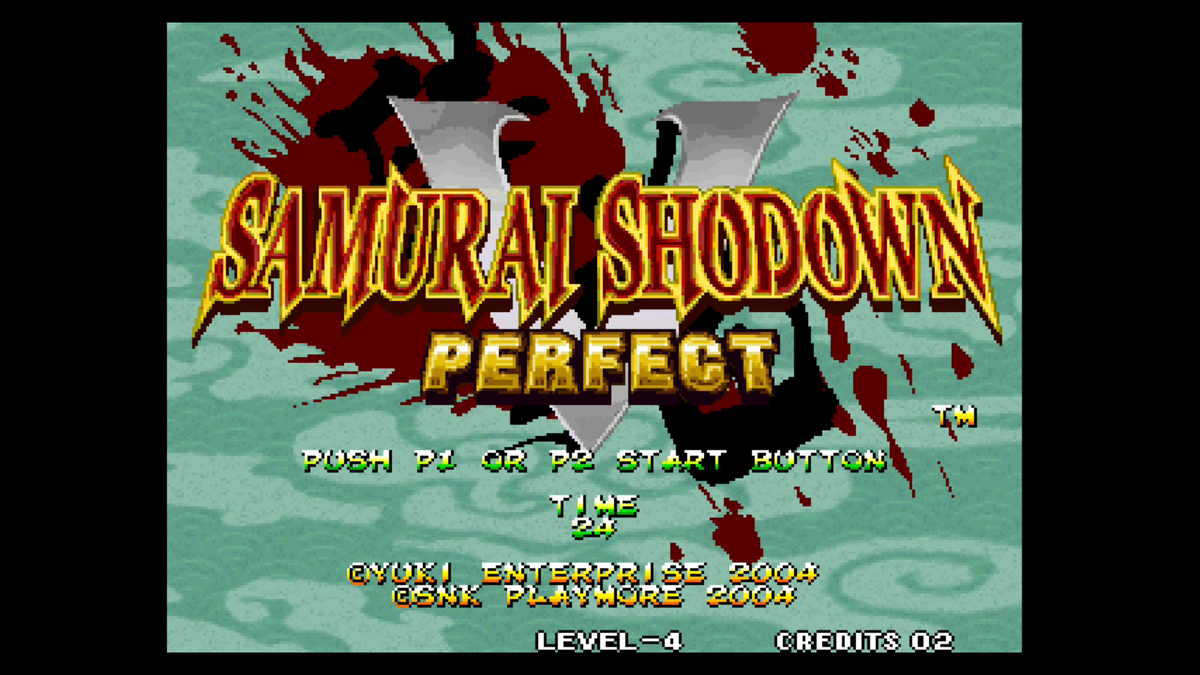
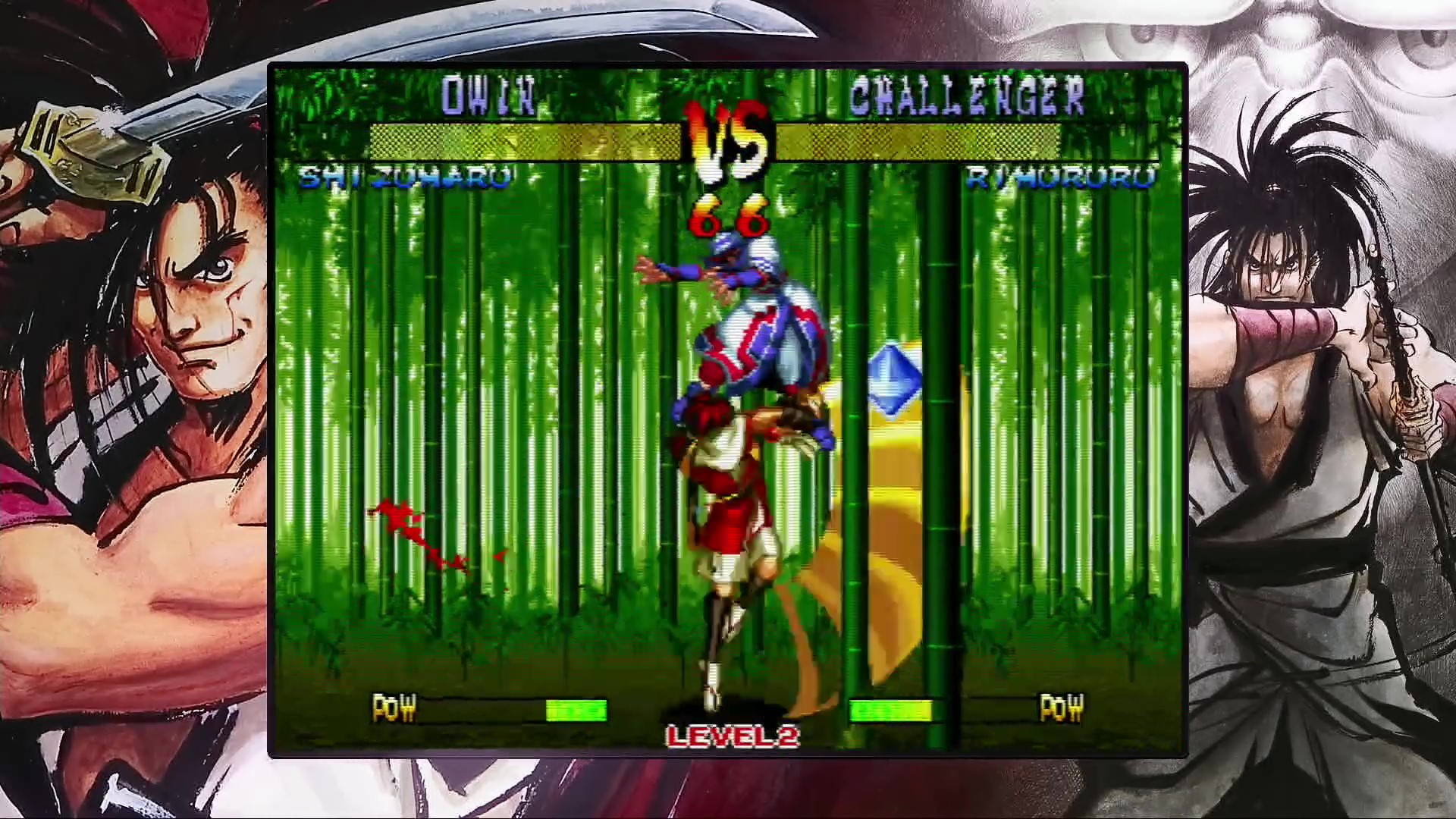
No comments:
Post a Comment